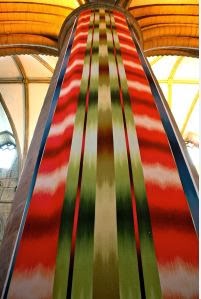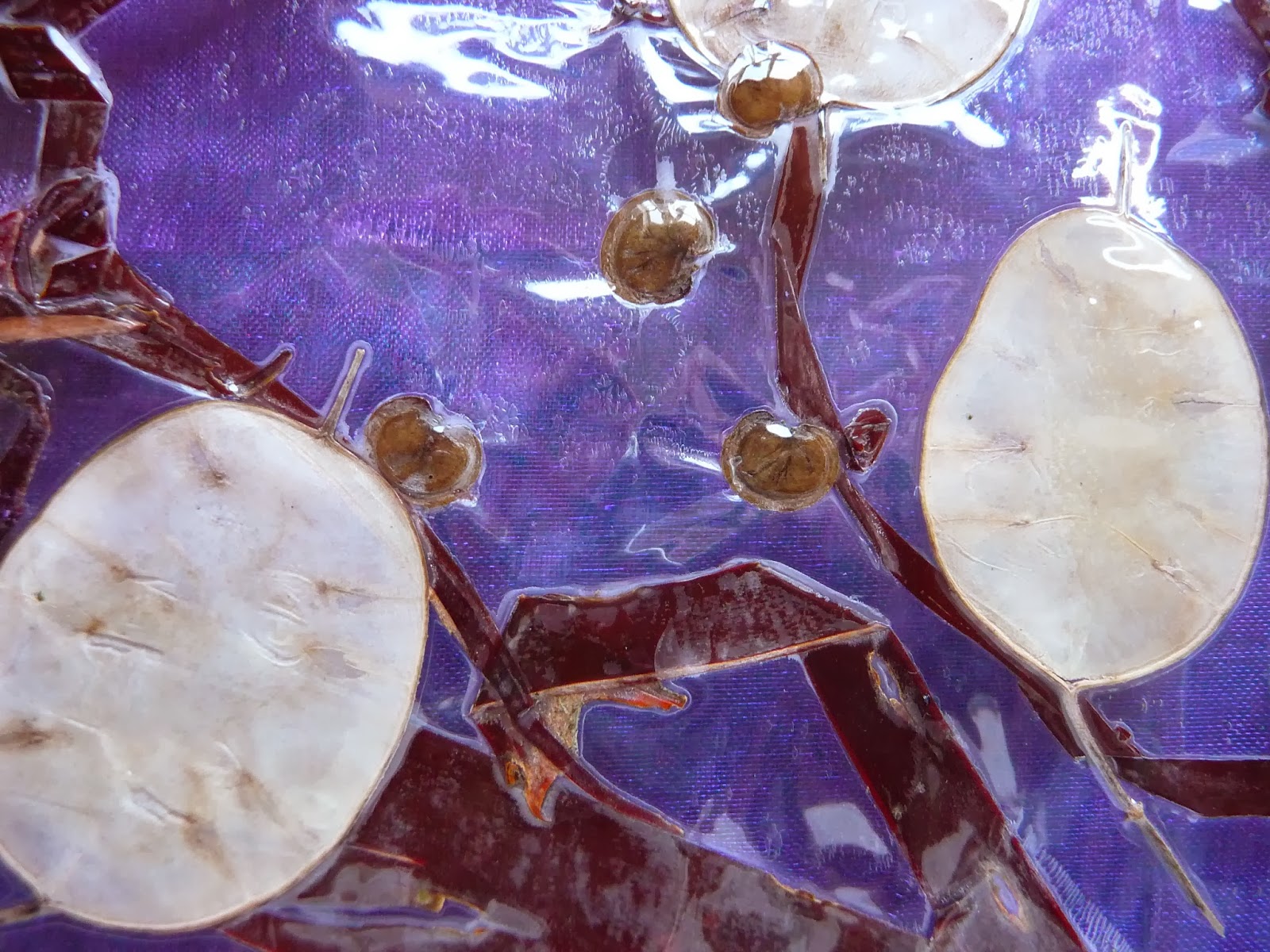Researching source material
It was sheer chance that I went to Extracts & Creativity by Helen Platt Hawkins at the gallery at Rufford Mill. Many of the photos fitted in with the Reveal and Conceal theme really well.
Photographer Helen Platt Hawkins was commissioned by the Arts service to create a collection of photographs portraying aspects of creativity.
Over a period of three months she documented the activities at the Craft Centre, creating a portfolio of inspiration which are exhibited for the first time in this show.
Also on show were works from her ‘Extracts’ series. From architecture to nature, this body of works does not seek to represent external, recognisable reality but to present the shapes, forms, textures and colours that exist within them.
I haven't found any of the images exhibited online but I have found some work that shows similar things. It's a style I like very much. It's complex, with many layers. There's always something new to see.
 |
| HPH 1 A different perspective |
 |
| HPH 2 A good lesson in design |
 |
| HPH 3 So much like my grids |
 |
| HPH 4 Shadows and shapes |
It's clear that the light and perspective make an enormous difference to how things look and it's something that intrigues me.
Some time ago, I think it was in Malaga Cathedral, I saw the huge pillars come alive with the colours as the sun shone through the stained glass windows. By the time I had got my camera out it had passed. Recently I found a triptych taken in Lincoln Cathedral by Jane Wright and just had to buy it because it offered the same magic.
The above photo shows the light shining through the stained glass windows at Lincoln Cathedral. I'm reminded of the ephemeral nature of the organza I've loved using - if the light changes so does the effect. The image isn't quite symmetrical but my eye tries hard to make it so.
Jane Wright has a lot to offer "Reveal and Conceal". Her web site is lovely.
Jane's work has the same sort of perspective as that of Ptolemy Mann in her digital print which was hung the length of a pillar at Gloucester Cathedral in 2012. Although it is not dependent on the light in the same way as before it would inevitably react and alter as the light changes.
 |
| Window light - Jane Wright |
Some time ago, I think it was in Malaga Cathedral, I saw the huge pillars come alive with the colours as the sun shone through the stained glass windows. By the time I had got my camera out it had passed. Recently I found a triptych taken in Lincoln Cathedral by Jane Wright and just had to buy it because it offered the same magic.
The above photo shows the light shining through the stained glass windows at Lincoln Cathedral. I'm reminded of the ephemeral nature of the organza I've loved using - if the light changes so does the effect. The image isn't quite symmetrical but my eye tries hard to make it so.
Jane Wright has a lot to offer "Reveal and Conceal". Her web site is lovely.
Jane's work has the same sort of perspective as that of Ptolemy Mann in her digital print which was hung the length of a pillar at Gloucester Cathedral in 2012. Although it is not dependent on the light in the same way as before it would inevitably react and alter as the light changes.
 |
| Digital print hanging the length of the pillars at Gloucester Cathedral in 2012 Ptolemy Mann |
http://annagravelle.wordpress.com/2012/12/02/227/
 |
| Frosty spiders web My photo |
When I was looking at these images I was reminded of this frost laden spiders web which was as delicate as the pillars are solid. It is only this visible because of the frost that highlights the structure and makes beautiful shapes.
This shape is also very similar in perspective and it creates optical effects:
 |
| Helen Platt Hawkins |
I find I'm building an archive of images to draw on and I quite like the idea that I can mix my own work in with that of other, more expert people.
http://www.janewrightphotography.com/photo_10769648.html#photos_id=10769648
http://www.helenplatthawkins.co.uk/gallery_495127.html#





















































